I want to set up a RDBMS for structured time series data of limited size (about 6000 series, 50mb of data) at various frequencies (daily, monthly, quarterly, annual CY and annual FY), and I want to run SQL queries on the database (mostly join various tables by time). The database is updated once a month. The variable names of the tables in this database are rather technical not very informative. The raw data is labeled as shown in the table below (example of a monthly table).
I started setting this up in MySQL and figured that just equipping tables with appropriate temporal identifiers gives me the join functionality I want. I could however not find out how to store the variable labels appropriately. Is it possible to somehow add attributes to the columns? Or can I link a table to the table mapping labels to the column names, such that it is carried along in joins? Or should I set this up using a different kind of database? (database must be easy to set up and host though, and SQL is strongly preferred). I am grateful for any advice.
Update: I figured you can add comments to MySQL columns and tables, but it seems these cannot be queried in a standard way or carried along in joins. Is it possible to retrieve the information in the comments along with the queried data from a standard database connector (like this one for the R language: https://github.com/r-dbi/RMySQL)? Below a DDL example for tables with variable labels as comments.
-- Annual FY Table
CREATE TABLE IF NOT EXISTS BOU_MMI_AF (
FY VARCHAR(7) COMMENT "Fiscal Year (July - June)",
NFA DOUBLE COMMENT "Net Foreign Assets (NFA) (Shs billion)",
NDA DOUBLE COMMENT "Net Domestic Assets (NDA) (Shs billion)",
PRIMARY KEY (FY)
) COMMENT = "Annual FY";
-- Quarterly Table
CREATE TABLE IF NOT EXISTS BOU_FS (
Year INT CHECK (Year >= 1800 AND Year < 2100) COMMENT "Year",
Quarter VARCHAR(2) CHECK (Quarter IN ('Q1', 'Q2', 'Q3', 'Q4')) COMMENT "Quarter",
FY VARCHAR(7) COMMENT "Fiscal Year (July - June)",
QFY VARCHAR(2) CHECK (QFY IN ('Q1', 'Q2', 'Q3', 'Q4')) COMMENT "Quarter of Fiscal Year",
KA_RC_RWA DOUBLE COMMENT "Capital Adequacy (%): Regulatory capital to risk-weighted assets",
AQ_NPL_GL DOUBLE COMMENT "Asset quality (%): NPLs to total gross loans",
EP_RA DOUBLE COMMENT "Earnings & profitability (%): Return on assets",
L_BFA_TD DOUBLE COMMENT "Liquidity (%): Bank-funded advances to total deposits",
MS_FX_T1CA DOUBLE COMMENT "Market Sensitivity (%): Forex exposure to regulatory tier 1 capital",
PRIMARY KEY (Year, Quarter)
) COMMENT = "Quarterly";
-- Daily Table
CREATE TABLE IF NOT EXISTS BOU_I (
Date DATE CHECK (Date >= '1800-01-01' AND Date < '2100-01-01') COMMENT "Date",
Year INT CHECK (Year >= 1800 AND Year < 2100) COMMENT "Year",
Quarter VARCHAR(2) CHECK (Quarter IN ('Q1', 'Q2', 'Q3', 'Q4')) COMMENT "Quarter",
FY VARCHAR(7) COMMENT "Fiscal Year (July - June)",
QFY VARCHAR(2) CHECK (QFY IN ('Q1', 'Q2', 'Q3', 'Q4')) COMMENT "Quarter of Fiscal Year",
Month VARCHAR(9) CHECK (Month IN ('January' , 'February', 'March', 'April', 'May', 'June', 'July', 'August', 'September', 'October', 'November', 'December')) COMMENT "Month",
Day INT CHECK (Day > 0 AND Day < 32) COMMENT "Day",
I_Overnight DOUBLE COMMENT "Daily Interbank Money-Market Rates: Overnight (%)",
I_7day DOUBLE COMMENT "Daily Interbank Money-Market Rates: 7-day (%)",
I_Overall DOUBLE COMMENT "Daily Interbank Money-Market Rates: Overall (%)",
PRIMARY KEY (Date)
) COMMENT = "Daily";
So if I execute a query like
SELECT * FROM BOU_I NATURAL JOIN BOU_FS NATURAL JOIN BOU_MMI_AF;
using a statistical software environment like R or STATA connecting to the database using a MySQL connector, I'd like to see a table similar to the one shown in the figure, where I can retrieve both the names of the variables and the labels stored as comments in the DDL.


